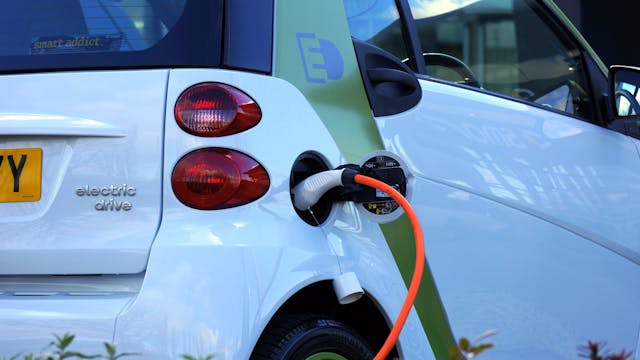EV Plugs: Paving the Way for Electric Mobility Transition
As we move towards a greener future, electric vehicles (EVs) are taking center stage. They're not just a trend; they're our ticket to a more sustainable world. But what's making this transition smoother? The humble EV plug.
EV plugs are the unsung heroes of the electric mobility revolution. They bridge our power grid and EVs, ensuring we're always ready to roll. Without them, we'd be stuck in the fossil fuel era.
So, let's explore the critical role of EV plugs in our shift to electric mobility. This is a story of innovation, sustainability, and the power of technology to change the world.
Challenges and Solutions
It's important to address potential obstacles that could slow the pace of EV adoption. We will acknowledge these challenges and offer solutions to propel us towards a more sustainable, electric future.
Infrastructure Development Dilemma
A significant challenge lies at the heart of this evolution—a development dilemma for infrastructure. With an increasing number of electric vehicles hitting the roads, there's an escalating need for EV plugs and charging stations. Let's view the current issue:
- Lack of sufficient charging infrastructure preventing widespread adoption
- Fear of running out of charge on long trips creates range anxiety among potential EV buyers.
Of course, these problems are manageable. What's needed is a focused approach to scaling up the charging infrastructure. Creative solutions such as:
- Multi-stalled EV charging that can accommodate multiple vehicles in a single location.
- They incorporate overnight charging solutions into urban planning, allowing residents to charge vehicles efficiently in shared or private areas.
Planning and Government Support
On the other hand, city planning and government support play critical roles in fostering the growth of electric mobility. There are certainly hurdles to overcome in this area as well:
- The installation of EV charging stations into urban development plans remains a challenging task.
- Insufficient policy incentives and support from local authorities
But despite these challenges, our road to an electric future looks promising. With the right blend of policy measures, we can accelerate this transition:
- Establishing EV-friendly regulations could incentivize the addition of charging facilities in new constructions or renovations.
- Offering financial incentives to organizations deploying EV charging infrastructure could make a difference.
Types of EV Charging
Regarding plug-in electric vehicles (EVs), an essential aspect in deciding to switch is the understanding and availability of charging infrastructure. Diversity in charging options is imperative for meeting various users' unique needs and constraints. Moreover, identifying the most effective charging level improves the overall EV experience.
Overview of Charging Levels
Three major levels of EV charging are commonly used: Level 1, Level 2, and DC Fast Charging. Each presents its own set of advantages and limitations, dictated largely by power output, charging speed, and infrastructure requirements.
Level 1 Charging
This method typically utilizes a 120-volt AC plug. It is a slow process. It is most suitable for overnight charging or long durations of parked vehicles, offering about 4-5 miles of range per hour of charging.
Level 2 Charging
It uses a 240-volt AC plug and charges significantly faster. Public charging stations, workplaces, and homes with dedicated EV charging setups frequently offer this. Depending on the EV model and electrical infrastructure, it provides roughly 10-60 miles of range per hour.
DC Fast Charging
As the name implies, these provide the quickest charge, pumping out 480 volts DC. Ideal for long trips or emergencies, they can replenish 80% of the battery in 20-30 minutes.
Impact on Electricity Grid
Today, the large-scale adoption of EVs impacts the stable operation of electricity systems. As a new load source, EVs also bring opportunities and challenges to integrating renewable energy. Within this section, we'll dissect these impacts on the various aspects of the grid.
Demand Increase and Renewable Integration
As more EVs cruise on our roads, we'll need corresponding increments in the power supply just to meet the demand for charging these vehicles.
To put it into perspective, a study by the National Renewable Energy Laboratory (NREL) indicates that if 75% of vehicles in the U.S. were electric, there would be an approximate 38% increase in the country's electricity demand. Peaking our curiosity, the same study estimates that a 100% electric vehicle scenario leads to a staggering 54% increase in demand.
|
EVs on road |
% Increase in Demand |
|
75% |
38% |
|
100% |
54% |
These numbers show how EVs could boost electricity demand.
We see a bright side to this ominous outlook. Rising electricity demand may enhance renewable energy grid integration, and energy producers might diversify into wind and solar electricity with a large market.
EVs may moderate renewable energy variations with clever charging procedures.
EVs can store electricity during high wind or solar production, balancing supply and demand. Operators can also move charging to off-peak hours to reduce peak-hour electrical grid load.
Developing effective smart charging and grid management systems needs further research and development. Technology can help power systems handle more EVs and their grid implications.
Remember that the goal is to integrate EVs while balancing renewable energy targets, reliability, and stability. Thus, we promote sustainable mobility and greener energy production and consumption.
Conclusion
EVs are changing how we travel and power our world. This change to electric transportation increases electricity demand, but there's a bright side. It's an opportunity to increase renewables in our system, making energy use cleaner and more sustainable. Smart charging and EV energy storage amid peak renewable production can stabilize our grid. Technology and grid management must evolve as we adopt EVs. Our electric future requires us to move forward, not just move.

